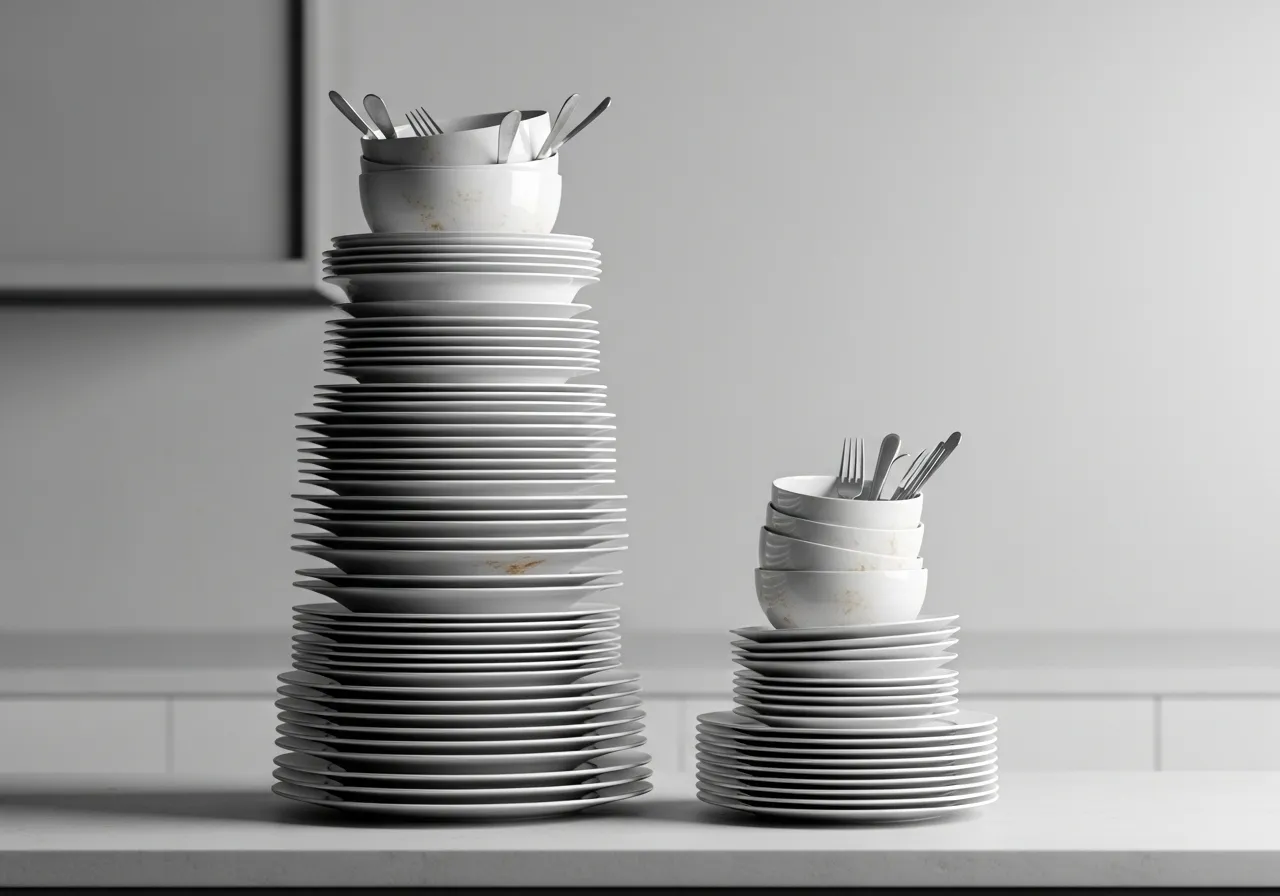
Frequently Asked Questions (FAQs)
Even after mastering the basics, a few specific questions often come up. Here are expert answers to some of the most common dishwasher dilemmas.
Is it better to run a half-full dishwasher or wait?
From an efficiency standpoint, it is almost always better to wait until you have a full load. Most dishwashers use roughly the same amount of water and energy for a cycle, regardless of how many dishes are inside. Running two half-loads consumes nearly twice the resources as running one full load. If you find you consistently have to run small loads, check if your machine has a specific “Half Load” or “Top Rack Only” setting, which will use less water and energy. However, the most eco-friendly and cost-effective strategy remains waiting for a full machine.
Why are my dishes still wet after the cycle?
There are a few common culprits for wet dishes. First, and most frequently, is a lack of rinse aid. As mentioned earlier, rinse aid is essential for helping water sheet off surfaces, which is critical for effective drying. Second, plastic items will almost always remain wet. Plastic doesn’t retain heat as well as glass or ceramic, so water doesn’t evaporate from its surface as easily. Third, improper loading that allows water to pool in the bottoms of mugs or the rims of containers will also leave things wet. Ensure everything is angled for proper drainage.
Can I put stainless steel and silver in the same load?
It is strongly recommended that you do not wash sterling silver or silver-plated cutlery in the dishwasher with stainless steel items. When these two different metals touch each other in the hot, wet, and chemical-rich environment of a dishwasher cycle, a chemical reaction can occur. This can cause the silver to develop pits and black spots that are difficult or impossible to remove. If you must wash silver in the dishwasher, ensure it is in a separate basket compartment where it will not come into direct contact with any stainless steel.
What do all the different cycles on my dishwasher mean?
While cycle names vary by manufacturer, they generally follow a common pattern. A “Normal” cycle is for everyday, moderately soiled loads. A “Heavy” or “Pots & Pans” cycle uses higher temperatures and more water for tough, baked-on messes. An “Eco” or “Light” cycle uses less water and lower temperatures for lightly soiled dishes, saving energy. A “Rinse Only” cycle is a quick, unheated spray to moisten dishes if you plan to let them sit for a while before running a full wash cycle. For the most accurate information, your best resource is always your appliance’s user manual.

















